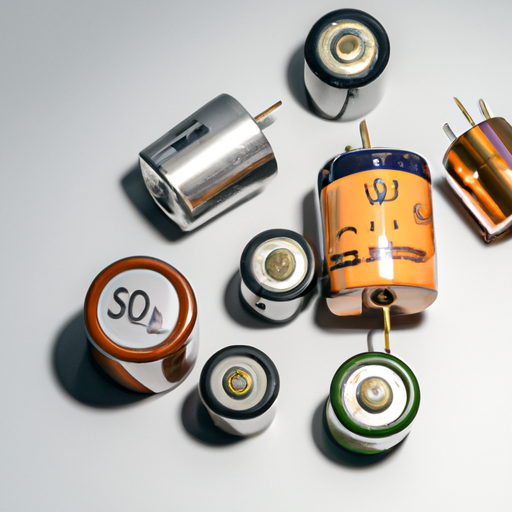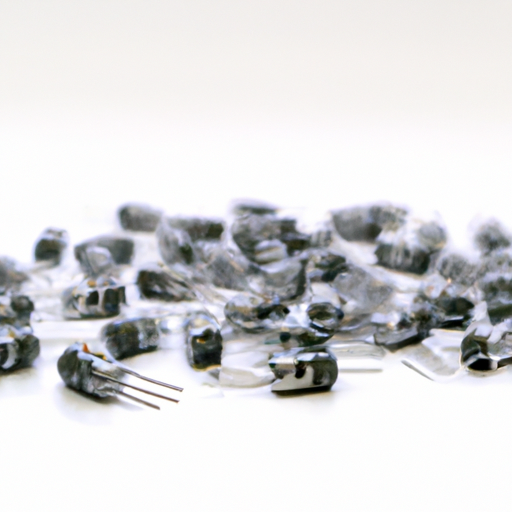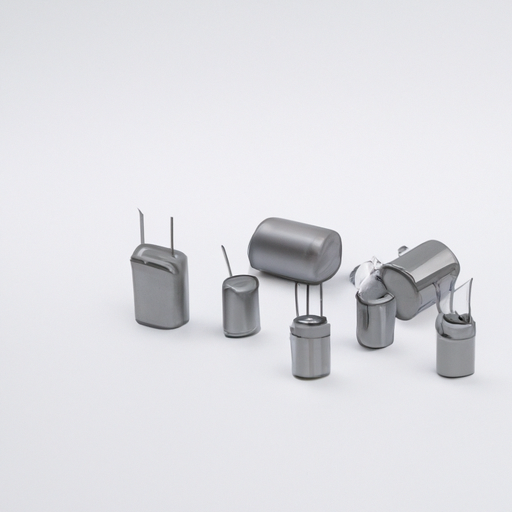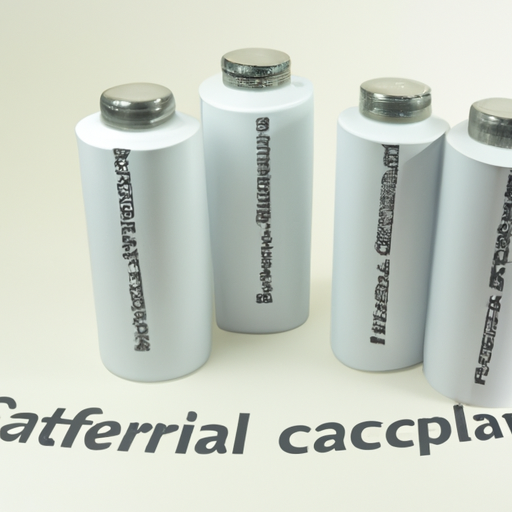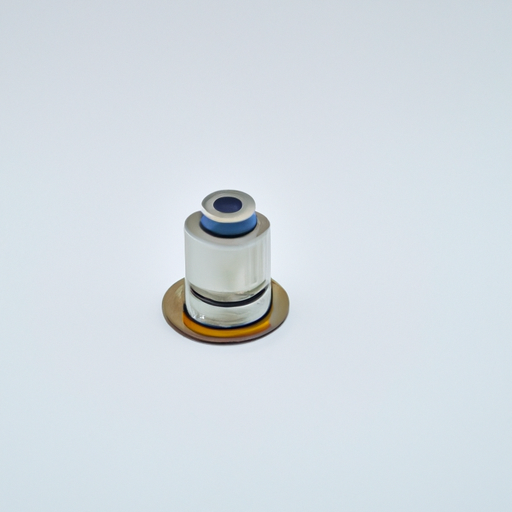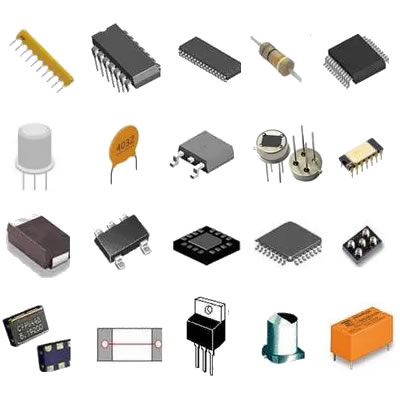What product types do film capacitors include?
What Product Types Do Film Capacitors Include?
I. Introduction
Film capacitors are essential components in modern electronic circuits, known for their reliability and performance. These passive electronic devices store and release electrical energy, playing a crucial role in filtering, coupling, and timing applications. This article will explore the various types of film capacitors, their construction, characteristics, applications, and how they compare to other capacitor types.
II. Basic Principles of Film Capacitors
A. Construction and Materials
Film capacitors are constructed using thin films of dielectric materials sandwiched between conductive electrodes. The choice of materials significantly influences the capacitor's performance.
1. Dielectric Materials
The dielectric material is a non-conductive substance that separates the electrodes and stores electrical energy. Common dielectric materials used in film capacitors include:
Polyester: Known for its good electrical properties and cost-effectiveness.
Polypropylene: Offers low dielectric losses and high insulation resistance.
Polycarbonate: Provides excellent thermal stability and high capacitance values.
Polystyrene: Known for its low dielectric constant and high stability.
2. Electrode Materials
The electrodes are typically made from metal films, such as aluminum or copper, which are deposited onto the dielectric material. The choice of electrode material affects the capacitor's conductivity and overall performance.
B. Working Principle
Film capacitors operate on the principle of electrostatics. When a voltage is applied across the electrodes, an electric field is created, causing positive and negative charges to accumulate on the respective electrodes. The amount of charge stored is proportional to the voltage applied and the capacitance of the capacitor.
C. Advantages of Film Capacitors
Film capacitors offer several advantages, including:
High reliability: They have a long lifespan and are less prone to failure compared to other capacitor types.
Low self-inductance: This characteristic makes them suitable for high-frequency applications.
Excellent thermal stability: They can operate effectively over a wide temperature range.
Low dielectric losses: This results in better efficiency and performance in circuits.
III. Types of Film Capacitors
Film capacitors can be categorized based on dielectric material, application, and construction.
A. Based on Dielectric Material
1. **Polyester Film Capacitors**: These are widely used due to their affordability and decent performance. They are suitable for general-purpose applications, including power supplies and audio circuits.
2. **Polypropylene Film Capacitors**: Known for their low dielectric losses, these capacitors are ideal for high-frequency applications, such as RF circuits and audio equipment.
3. **Polycarbonate Film Capacitors**: These capacitors offer high capacitance values and excellent thermal stability, making them suitable for timing and coupling applications.
4. **Polystyrene Film Capacitors**: With low dielectric constants and high stability, polystyrene capacitors are often used in precision applications, such as audio and measurement equipment.
5. **Other Specialty Dielectrics**: Some film capacitors utilize specialty dielectrics, such as fluorinated polymers, for specific applications requiring unique properties.
B. Based on Application
1. **Power Electronics**: Film capacitors are commonly used in power supply circuits, motor drives, and energy storage systems due to their high voltage ratings and reliability.
2. **Audio Applications**: High-quality film capacitors are essential in audio circuits, where they help maintain signal integrity and minimize distortion.
3. **RF Applications**: In radio frequency circuits, film capacitors are used for tuning and filtering due to their low losses and stable performance.
4. **Timing and Coupling Applications**: Film capacitors are often employed in timing circuits and coupling applications, where precise capacitance values are crucial.
C. Based on Construction
1. **Axial Film Capacitors**: These capacitors have leads extending from both ends, making them suitable for through-hole mounting in circuit boards.
2. **Radial Film Capacitors**: With leads extending from one end, radial capacitors are compact and ideal for space-constrained applications.
3. **Metallized Film Capacitors**: These capacitors have a thin layer of metal deposited on the dielectric, providing self-healing properties and improved reliability.
4. **Non-Metallized Film Capacitors**: These capacitors do not have a metal layer, making them suitable for applications requiring high voltage ratings.
IV. Key Characteristics of Film Capacitors
When selecting a film capacitor, several key characteristics should be considered:
A. Capacitance Range
Film capacitors are available in a wide range of capacitance values, typically from a few picofarads to several microfarads, allowing for flexibility in circuit design.
B. Voltage Ratings
Film capacitors come with various voltage ratings, often ranging from a few volts to several kilovolts, making them suitable for different applications.
C. Temperature Coefficients
The temperature coefficient indicates how the capacitance value changes with temperature. Film capacitors generally have stable temperature coefficients, ensuring consistent performance across varying temperatures.
D. Tolerance Levels
Tolerance levels indicate the permissible deviation from the nominal capacitance value. Film capacitors typically have low tolerance levels, ensuring precise capacitance values.
E. Frequency Response
Film capacitors exhibit excellent frequency response characteristics, making them suitable for high-frequency applications without significant losses.
V. Applications of Film Capacitors
Film capacitors find applications across various industries, including:
A. Consumer Electronics
In consumer electronics, film capacitors are used in audio equipment, televisions, and power supplies, where reliability and performance are critical.
B. Industrial Equipment
Film capacitors are employed in industrial machinery, motor drives, and power conversion systems, where they help improve efficiency and reduce noise.
C. Automotive Applications
In the automotive industry, film capacitors are used in electronic control units, infotainment systems, and power management systems, ensuring reliable operation in harsh environments.
D. Renewable Energy Systems
Film capacitors play a vital role in renewable energy systems, such as solar inverters and wind turbines, where they help manage power flow and improve efficiency.
E. Telecommunications
In telecommunications, film capacitors are used in signal processing, filtering, and coupling applications, ensuring high-quality signal transmission.
VI. Comparison with Other Capacitor Types
A. Film Capacitors vs. Ceramic Capacitors
While both film and ceramic capacitors are widely used, film capacitors generally offer better stability and lower losses, making them suitable for high-frequency applications. Ceramic capacitors, on the other hand, are more compact and cost-effective for low-capacitance applications.
B. Film Capacitors vs. Electrolytic Capacitors
Film capacitors are more reliable and have a longer lifespan compared to electrolytic capacitors, which can be prone to leakage and failure. However, electrolytic capacitors typically offer higher capacitance values in a smaller package, making them suitable for bulk energy storage.
C. Film Capacitors vs. Tantalum Capacitors
Tantalum capacitors are known for their high capacitance and small size, but they can be more expensive and less reliable than film capacitors. Film capacitors, with their self-healing properties and stability, are often preferred in applications requiring long-term reliability.
VII. Future Trends in Film Capacitor Technology
A. Innovations in Materials
Research is ongoing to develop new dielectric materials that enhance the performance of film capacitors, such as higher temperature ratings and lower losses.
B. Miniaturization and Integration
As electronic devices become smaller and more compact, the demand for miniaturized film capacitors is increasing. Manufacturers are focusing on integrating film capacitors into circuit boards to save space.
C. Environmental Considerations
With growing environmental concerns, there is a push for eco-friendly materials and manufacturing processes in the production of film capacitors, ensuring sustainability in the electronics industry.
VIII. Conclusion
Film capacitors are versatile components that play a crucial role in various electronic applications. Understanding the different types of film capacitors, their characteristics, and their applications is essential for selecting the right component for specific needs. As technology continues to evolve, film capacitors will remain integral to modern electronics, ensuring reliability and performance in an ever-changing landscape.
IX. References
- Academic Journals
- Industry Reports
- Manufacturer Specifications
- Online Resources and Articles
This comprehensive overview of film capacitors highlights their importance in electronic circuits and provides insights into their various types and applications. By understanding these components, engineers and designers can make informed decisions when selecting capacitors for their projects.

